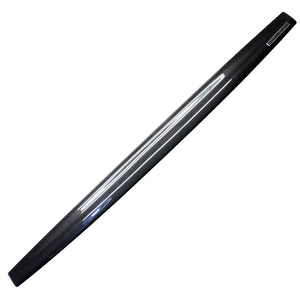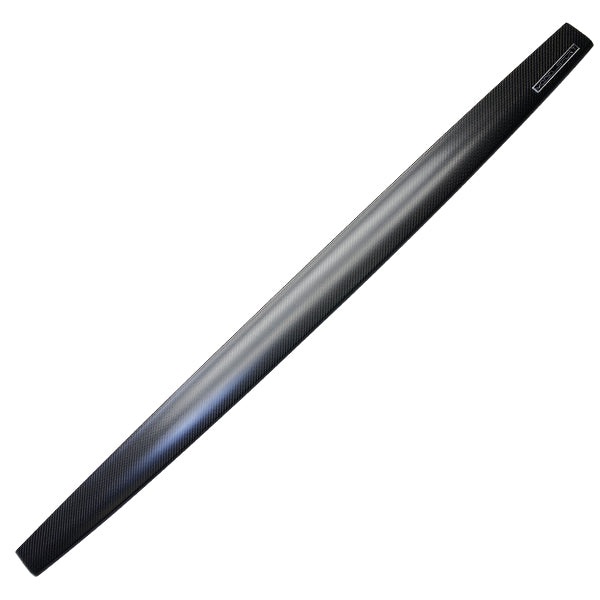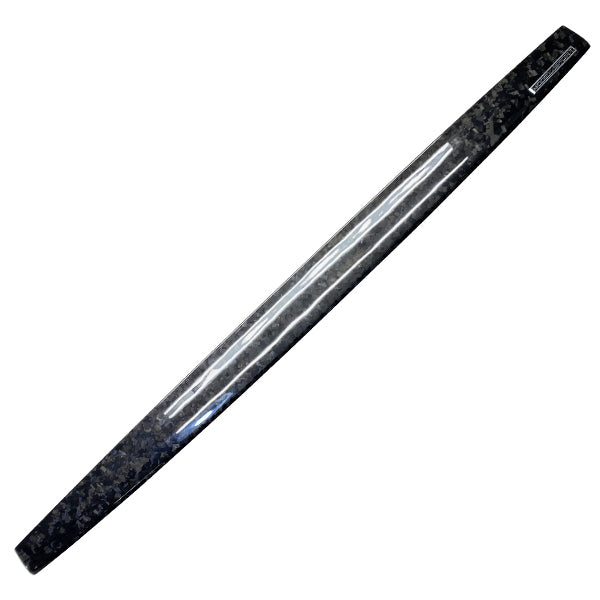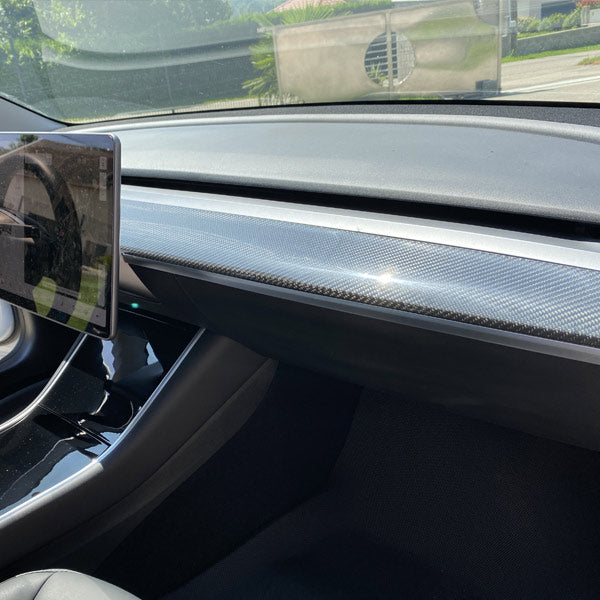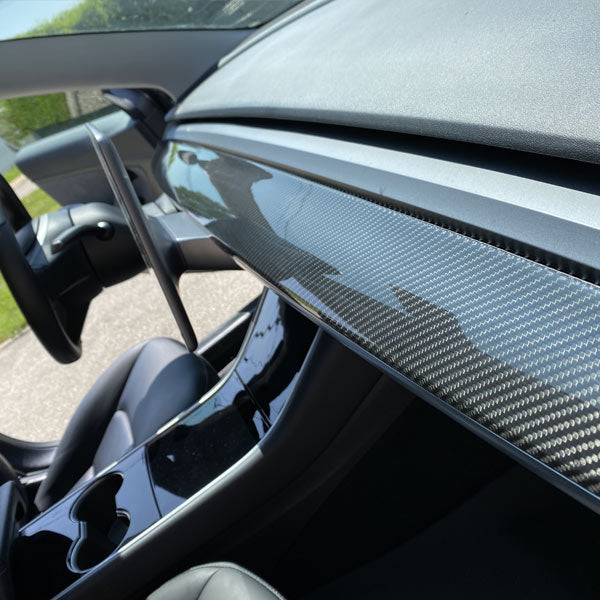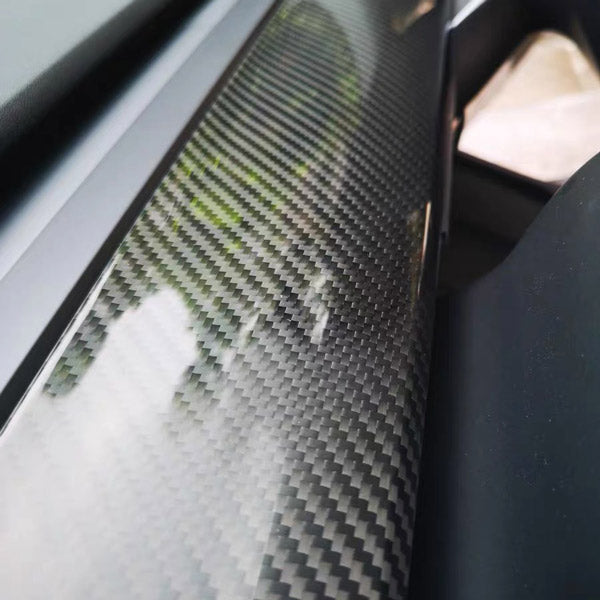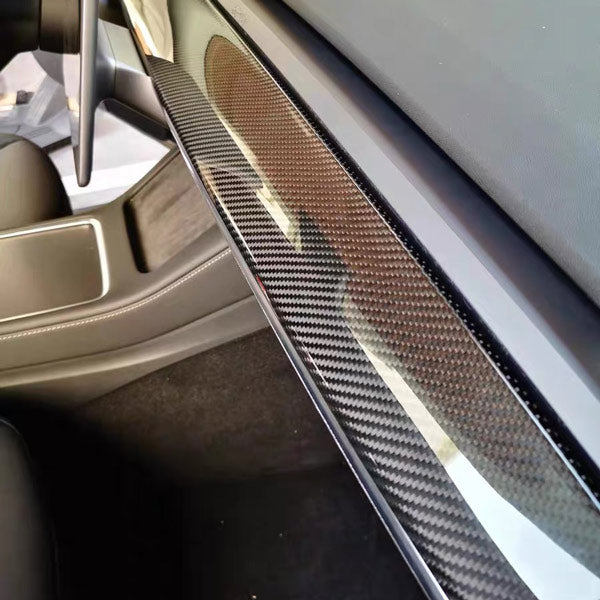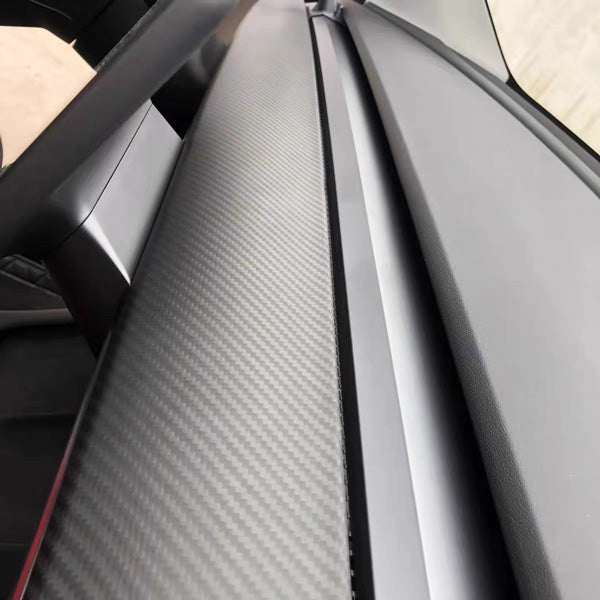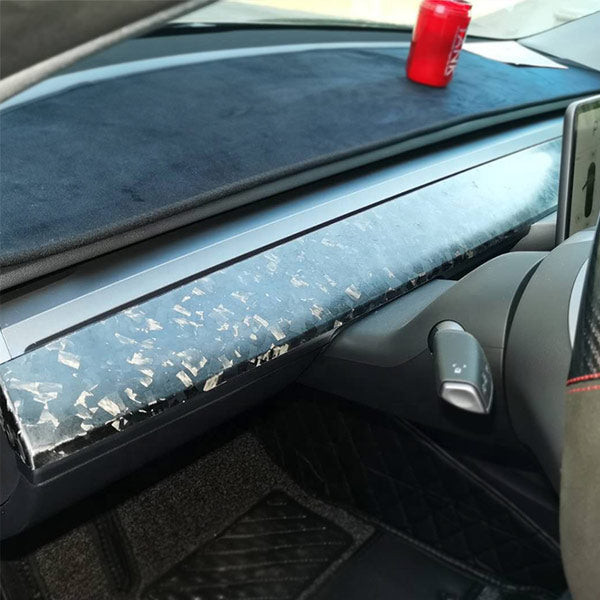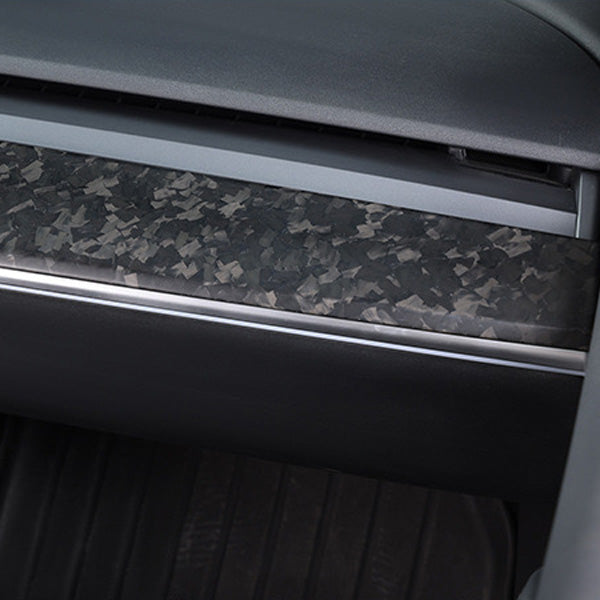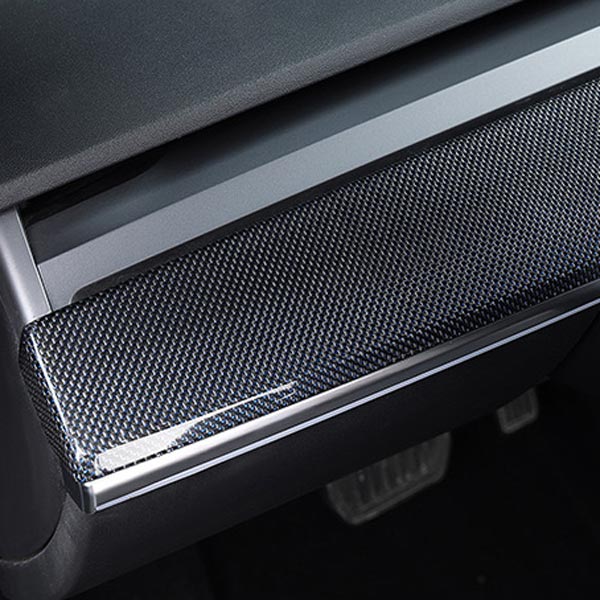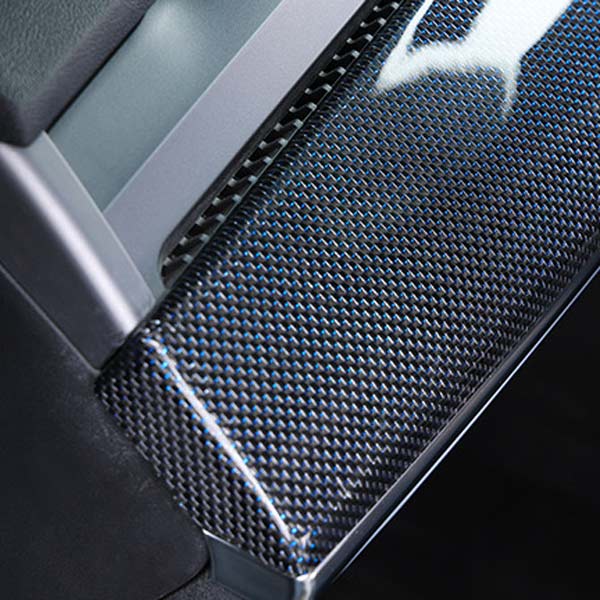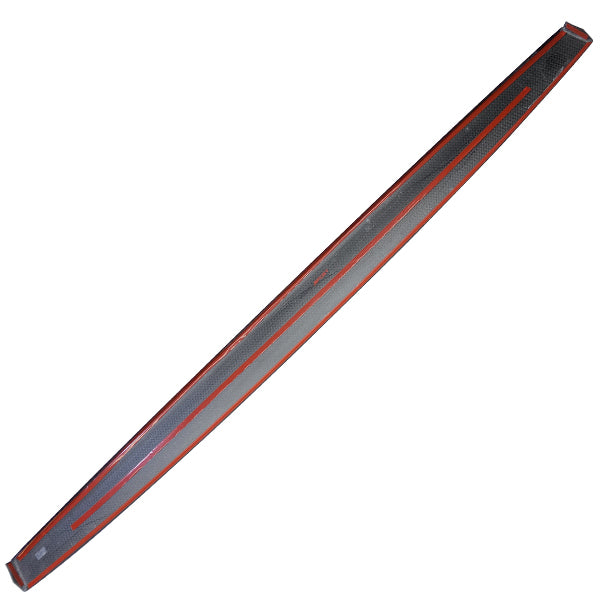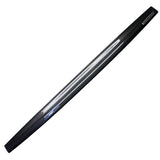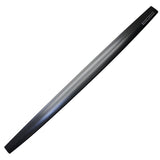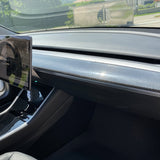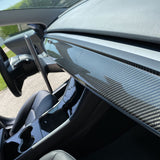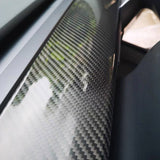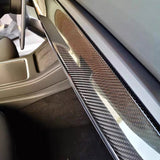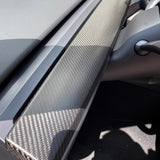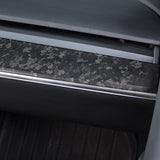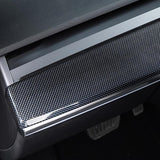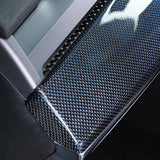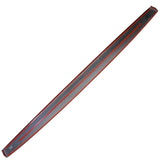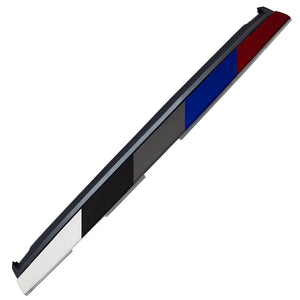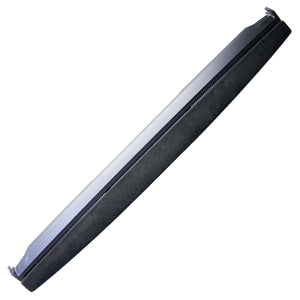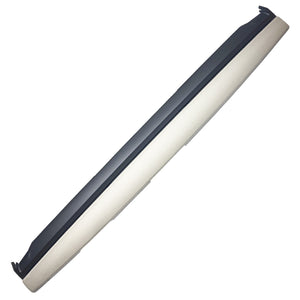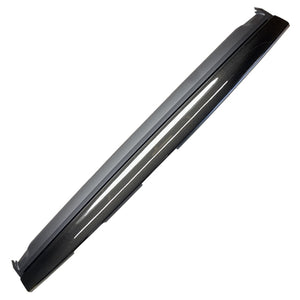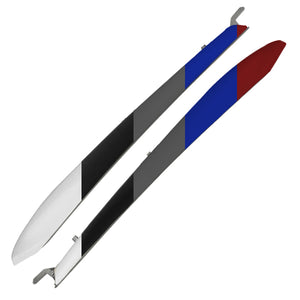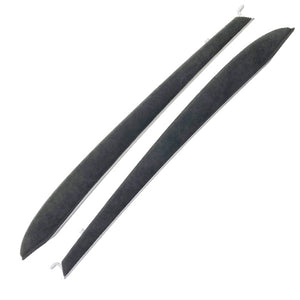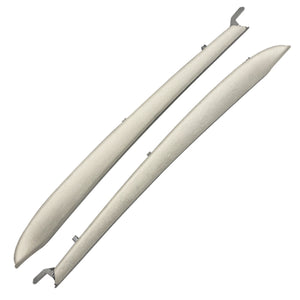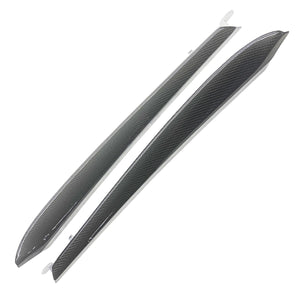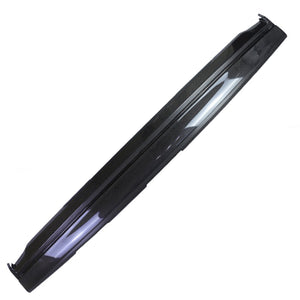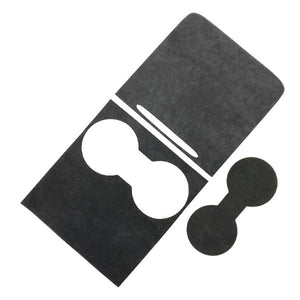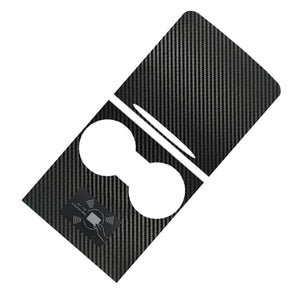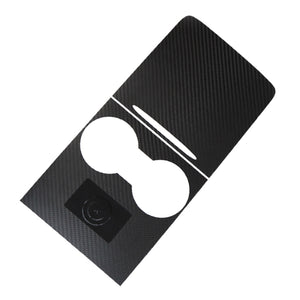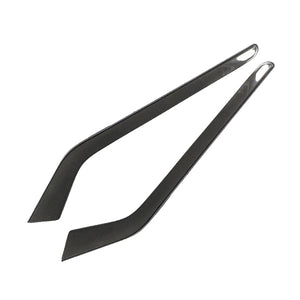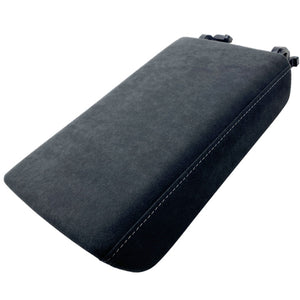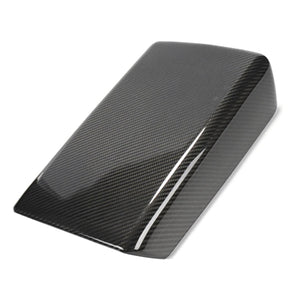Carbon dashboard insert
Tesla Model 3 - Y
The nobility of carbon in its glossy, matte or forged finish. The dashboard is one of the main elements of the Model 3 cabin, display its sportiness with this carbon insert.
Carbon construction that meets your expectations
It took a lot of trial and error to produce a dashboard insert for your Tesla Model 3 that had a perfect fit.
The biggest challenge for an insert is to succeed in giving the illusion that it is an integral part of the dashboard, without any additions. It is for this reason that we use a relatively thin double-sided (0.6 mm) and a very tight fit (especially on the exteriors) of the insert to blend in with the original dashboard.
For purists who prefer one-piece carbon elements, we also offer our replacement carbon dashboard for Tesla Model 3, which will be housed in place of the one of origin.
Features of the dashboard insert for Tesla Model 3
- Original design: changes the look of your Tesla
- Perfect finish: in real carbon
- Applies easily: durable 3M double-sided
- Does not leave glue residue after uninstallation
- Year of correspondence: Model 3 and Y version 2017-2020 and 2021-2023

_________
Model Sport's unique advantage in terms of carbon construction? What is a composite material? The true meaning of a carbon element?
We can deal with the subject by focusing on these few parts:
• It is eminent to look once and for all at what carbon actually is
• What makes Model Sport a experienced brand to work in the field
• The range of carbon tuning elements for your Tesla
By finishing your reading, you will be able to obtain a real carbon element in full knowledge of the facts.
What is a composite material?
This type of elaboration is a good way to obtain an object with high mechanical provisions while using two components that cannot be combined with each other, but which can be associated.
What to choose between the different types of carbon or Texalium for electric sound?
Carbon certainly has many variations and above all there are many ways to implement it.
You have to make a distinction that will be important for purists: what is commercially nicknamed "carbon" actually has the name "carbon fiber composite", this name is much more correct in the world of stratification.
200 gram 3K twill carbon membrane:

The 3K carbon in twill weave is undoubtedly the most accustomed of its variety, let's start with this one. In truth, the term "twill" is a denomination which is used to qualify the mesh of the carbon fabric. You can see what the twill describes in the image just above.
Twill is the most widely used braiding and for good reason, one of them being its maneuverability allowing it to adapt appreciably in a mold with pronounced shapes and curves. That said, we will not detail the type of interlacing in 3/1, 2/2 and 4/4. The sign annotated "3K" has for definition the total number of filaments which constitutes a single carbon weft, in total unit: 3000 strands.
1/20th of the thickness of a hair: this is an order of magnitude that will let you know the diameter of a single strand of carbon. To tell the truth, there are a multitude of varieties; the most common of which are 1K, 3K, 6K and 12K.
The Tesla community is particularly accustomed to seeing 3K. The term “200 gr/m²” means that 1 m² of a carbon section, before treatments, weighs 200 grams.
Remember: 3K twill in 200 grams per square meter is widely used in the Tesla community, not for its mechanical features; but rather for its aesthetic configuration.
Let's talk about forged carbon:

This name forged is reminiscent of other names, but you should know that forged carbon is not innovative and that it owes its name to a unique molding method.
To give you a simplistic definition, so-called "forged carbon" refers to a unique production process: carbon fiber is cut into small pieces and then dispersed evenly in a mold. Once the resin has been added, the mold is put under compression (with a positive and negative master) then heated to high temperature. The process used for the development of forged carbon thus gives a big benefit on rigidity and lightness, because the density of carbon obtained per square centimeter compared to the resin is higher.
Although the general public has known this appearance of carbon since its application by Lamborghini, forged carbon has been used since 1980 in various fields such as the manufacture of missile warheads.
The Texalium, the Stranger:
Very often it is likened to carbon, but that has nothing to do with it. The Texalium is totally different in substance and form. It is actually a glass fabric loaded with aluminum and then tinted to the desired color to give it a different appearance.
You should know, however, that its mechanical properties are less than those of a usual glass fabric. And its use is purely aesthetic.
You should know that Texalium has been around for many years and is just managing to take its place in certain tune-ups in France, but that it is much more widespread and used in the United States.
What does carbon look like visually?
We are going to provide you with some examples of the use of carbon fiber. Note that if you are interested in one of these versions, Model Sport remains open to customization and can therefore provide you with a quote.
What mechanical stress can be exerted on carbon?
Constantly questioned, this is a request that deserves a little more in-depth development.
The real question will be whether carbon is more durable than another material? To give you an idea, even at equal volumes, a carbon part is more durable than an aluminum alloy part.
Nevertheless, the term "resistant" deserves an interpretation Even if carbon is less enduring to impacts, it has surprising qualities in torsion and bending.
Carbon inserts are possible for the simple and unique reason of their tolerance to torsion and bending. The dashboard insert for the Y or 3 models is worth mentioning: this element is only useful for its aesthetics (as with most carbon components for Tesla) over a length of 1m40 and a thickness not exceeding 0.5mm. While knowing that they are sent throughout France without complication.
Why is carbon fiber so expensive?
Let's go back to the production of the carbon cloth to assimilate the price of it. The method of shaping a carbon frame is already relatively complicated.
The technique that prevails over the others is composed in this way: a specific synthetic fiber, a polyacrylonitrile, will be oxidized and then carbonized to finally deliver what is called carbon fiber. It takes a lot of energy to achieve such a chemical mutation.
The awareness of more and more carbon fiber manufacturing industries gives rise to certain projects, totally directed with the aim of producing it using as few chemicals as possible.
The use of bio-sourced materials is fashionable and even more and more necessary to meet certain environmental criteria put in place. The goal: the elimination of chemical products, but also a division of the price. Also consider that the equipment required to fabricate even carbon fiber is relatively expensive in every sense of the word. Keep in mind that compared to a human hair, a carbon fiber is 20 times smaller.
To give you a price, which remains indicative, because it is subject to the variation of the world economic price: €30 per square meter. This price is given for a 3K twill carbon tablecloth that weighs 200gr per square meter. The number of layers as well as the cost of the resin to be used are also components to take into account. Finally, the fees of an experienced laminator are to be considered.
Model Sport carbon and its unique properties
Mastering the stages of production is important to know the finished product, which is why we are addressing this subject.
In the field of the production of carbon parts, the creator of the company Model Sport, François SPITALS, implements all his knowledge in the field of design and creation of automobile bodywork to provide the best in terms of finishing.
A Tesla dressed in carbon fabric or its laminated version? The surprising mechanical properties of carbon are deliberately overlooked for its visual configuration in the world of aesthetic enhancements to our vehicles. In the Tesla domain, all of the carbon parts will not be subjected to any torsion or bending stress.
Automotive sportiness is the main purpose of these carbon components.
The constraints will be largely cashed on the Model S, 3, X or Y equipped with a body kit, even if this one uses low-end carbon (namely that it is difficult to develop carbon known as " bad quality "). To date, there are multiple categorizations of carbon stiffness.
But the most used being the "HR" or High Resistance for flexibility and versatility. For all the carbon parts of your Tesla, Model Sport is also based on this very common type of carbon and so practical on several points.
It differs from HM (High Modulus) which will certainly be lighter, but also much more brittle, so much so that it almost always has to be combined with HR. Forged carbon indicates this use primarily for its appearance than for its properties, however, it does have multiple characteristics.
What is the best resin to use?
Now let's talk about the key element of carbon parts: the resin. The mass production of certain carbon elements is generally produced with polyester resin. It is inexpensive and withstands high heat fairly well. In the motorcycle industry, polyester resin is used in combination with carbon to produce exhaust cartridges.
Components subjected to loads or forces are primarily used with Epoxy, because it provides greater resistance to the composite material. The anti-UV resin is still a step above: no yellowing in the long term. It is for this argument that we apply this product type.
In addition to having a more transparent appearance, the Anti-UV Epoxy Resin will not be affected by the effects of the sun. This is the strongest point of this type of resin: the parts will not yellow in a few years. It will be perfect during installation, but beware of periods of heat wave, otherwise you will notice a yellowish and opaque appearance in a few years.
You should also understand that the resin used will have a price directly related to its application, its quality and its resistance over time.
At this stage, it is interesting to evaluate the selling price of such a product in France:
• €8 to €10 for a kilogram of Polyester resin
• €50 to €60 for per kilogram of Epoxy
resin • €55 to €65 for one kilogram of anti-UV Epoxy resin
What is the topcoat on a carbon part?
It must be said that this is the operation that closes the project.
Initially, we produced carbon parts without using paint to guarantee long life, however this specificity forced us to develop perfect parts the first time, with no possibility of catching up.
Which induces a very high and counterproductive scrap rate taking into account that the spirit of the Tesla brand is to reduce pollution, so this waste was nonsense.
To obtain a more "standard" result in the manufacture of our carbon elements, we have therefore started to use a higher quality varnish. The matte varnish gives a more luxurious finish, however, it needs extreme finesse for its application in order to acquire the desired result. The glossy finish will be polished with a polisher to guarantee a mirror effect on the surface of the parts.
The kind of carbon on the Tesla S and X automobiles
While many components match in both versions, there are some differences between years.
It is for this reason that you will be asked for information about the year and month of production of your Tesla before shipment.
Tesla S or X interior trim
The Model S and X have been forgotten by props since the launch of the Model 3, however these also benefit from a range of upgrades provided.
Replacement carbon elements or even inserts that will simply cover the main trim components.
One of the main elements of your Model S or X is undoubtedly the steering wheel. This can be personalized to infinity, in twill or forged carbon, glossy or matte and leather or Alcantara trim. The latter will have a fairly precise focus, which many other accessories will be able to benefit from in the future.
Model S and X: bodywork components
As for the Model S, the first element sought is the Performance-type Spoiler.
In its matte version, you will have the same look as the one present on the Performance versions of the Model S, with the difference that the Model Sport has a bonding surface and a unique internal structure. Once the spoiler is installed, no difference is visible. The Plaid version is also in production at the time of writing this paragraph.
Smaller components such as the mirror caps or the grille can benefit from their full carbon finishes.Although 3K twill carbon is the most common, more "exotic" creations such as Texalium may be the subject of a study, in this case contact us by phone or email.
Carbon fiber on the Tesla Model 3 and Y
The most modified electric vehicle of all time is undoubtedly the Tesla Model 3, which receives an incredible number of carbon-based evolutions.
The two best-selling electric cars from the Tesla brand have a lot in common.
Model 3 and Y interior
Part of the Tesla community is undoubtedly familiar with carbon inserts for Model 3 or Y.
It is an exercise in strength to be able to mass-produce carbon elements that can cover a part while giving the impression that there is no addition.
It is on this assumption that the quality of an insert must be judged.
The door, dashboard and other center console trim required a number of different trials to find the right technique and the right mold to produce these inserts of incomparable quality.
What designates the precision of the insert lies in the meticulousness of its cutting, as well as in the overall shape taking into account an ultra-thin double-sided in order to pose as close as possible to the elements.
Carbon replacement parts, however, are making more and more careful owners happy. For the most demanding of you who like beautiful parts with meticulous manual work, the carbon dashboard and door trim will satisfy you.
Model 3 and Y: their body parts
Here too, as far as the Model 3 and Y are concerned, the evolutions of the bodywork with carbon components are really well provided.
A good way to transform the exterior visual appearance, with a composition in 3K twill or forged, and matte or gloss finish.
One of the most popular elements and undoubtedly the Performance spoiler in its matte version. For Model 3 or Y, it will always have a benefit compared to other carbon parts.
Having become almost a standard in the Tesla world, it will stick directly to the edge of the trunk.
To combine the two advantages of carbon, which are weight loss and sportier appearance, you can opt for a more substantial evolution such as the carbon front cover.
- 🇫🇷 Gestionnaire Français
- Commandez directement au Fabricant ou au Distributeur
- Payez que votre produit (pas de frais de stockage ni de taxe territoriale)
- Livraison dans toute l'Europe !
Vous remarquerez que le bouton au-dessus vous redirige vers un des distributeurs ou fabricants du produit.
La major partie des accessoires Tesla proviennent de Chine, commander via les plateformes Aliexpress, Alibaba, Amazon, Hansshow ou Jowua vous donnera la possibilité d'obtenir le produit sans intermédiaire.
Les produits vendus en France ou en Europe proviennent du même fabricant Chinois (ou autre), mais avec une marge supplémentaire servant à payer les frais de fonctionnement de la société.
Cependant, l'avantage de commander à proximité est d'obtenir un délai de livraison plus rapide (néanmoins nous proposons aussi des produits expédiés directement depuis des stock Français ou Européens)
Model Sport a initialement commencé en faisant du stock en France, nous connaissons donc quels sont les fabricants de confiance et leur méthode de travail. Si bien que nous les citons avec leurs accords : MAOFA, BFB carbon, Yute Technologie, DCR Tuning, LITA Accessories, Jogon, Ever carbon, Carbonss Tuning, Jowua.
Ces fabricants, parmi quelques autres, sont les plus actifs et sérieux dans leur qualité de fabrication. Nous vérifions que les produits proviennent systématiquement de notre liste de fabricant. Ainsi, que vous commandiez via un distributeur Aliexpress, Amazon ou autre, nous savons que le produit sera de bonne facture.
